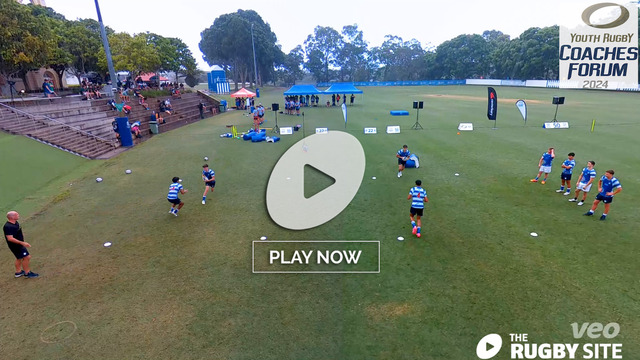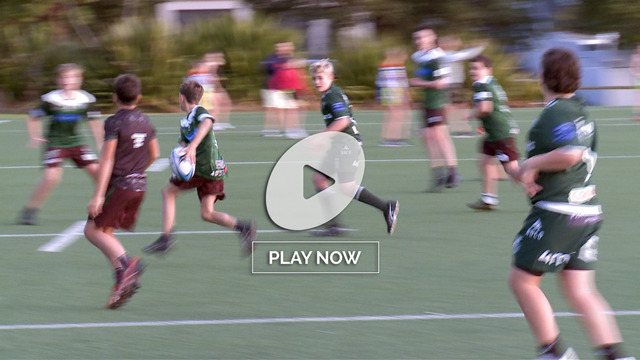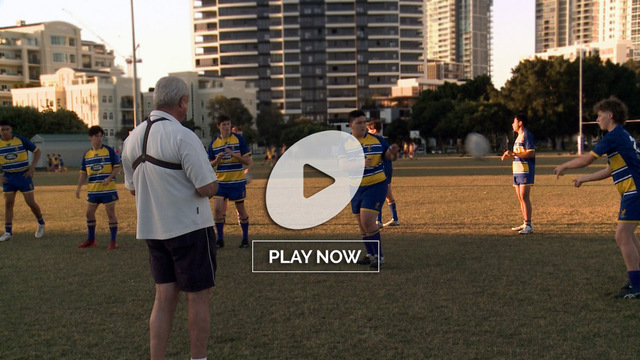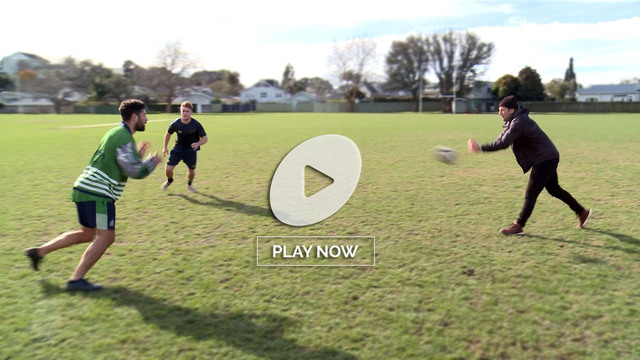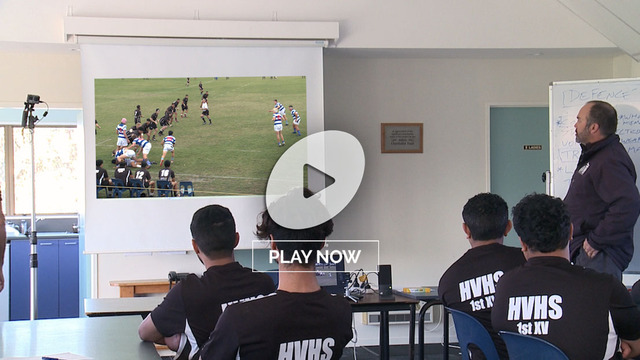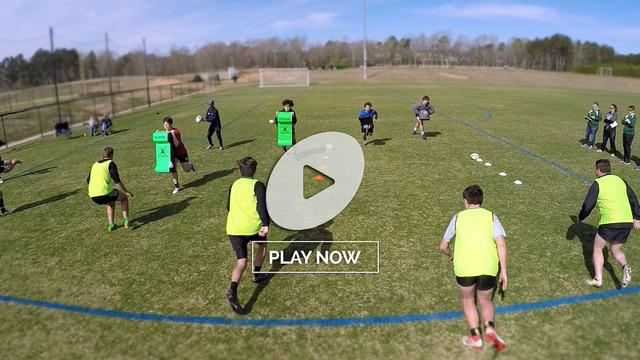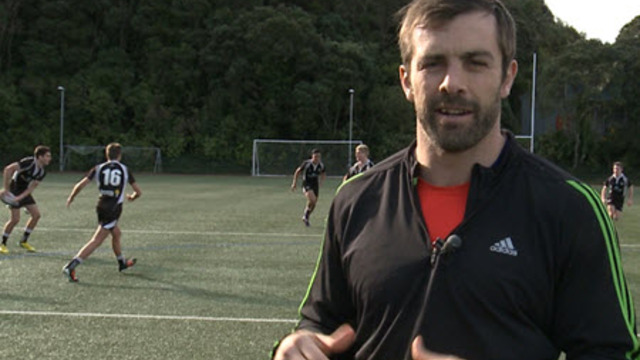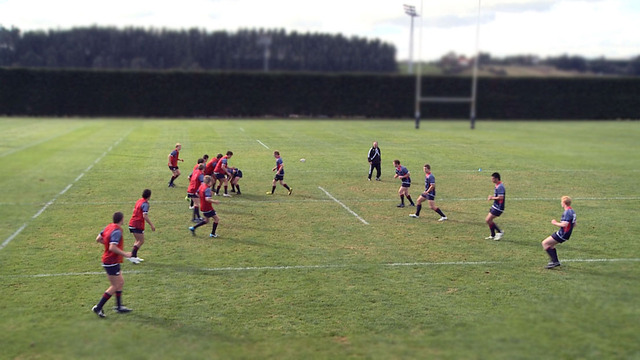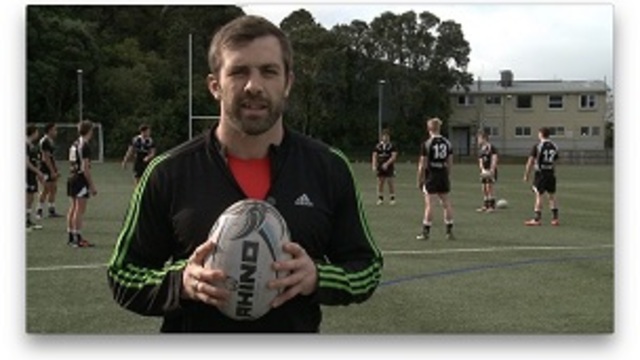Coaches are always on the lookout for subtle law-changes which can have important consequences out on the field. One of the most significant recent adjustments is the quickening of play from the so-called ‘caterpillar ruck’, in which the kicking scrum-half will retreat to the back of a multi-layered breakdown before launching a high contestable kick.
The new officiating guidance reads thus:
15.17 When the ball has been clearly won by a team at the ruck, and is available to be played, the referee calls “use it”, after which the ball must be played away within five seconds. Sanction: scrum.
It is still rare for this guidance to be applied stringently, but New Zealander James Doleman was consistently sharp in his application throughout the game between Australia and Georgia.
He set the tone for proceedings in the 4th minute of the game:
Doleman gestures with his left arm for the ‘use it!’ command, then gestures again for a two-second warning. When the Georgian scrum-half does not comply, he awards a turnover scrum to the Wallabies.
The second important effect is that the five-second warning shortens the caterpillar, forcing would-be blockers to stand out of the ruck. The ball is more amenable to be blocked-down, and the kick has to be launched without an added layer of protection:
Thirdly, the quicker tempo means that kicks are more likely to decease accuracy and allow greater space for the return team to exploit:
The kick from Wallaby scrum-half Tate McDermott is hurried, it is not contestable and there is ample space for the Georgian return team to advance well beyond halfway under no pressure at all.
Summary
All the signposts are that the five-second rule at the ruck will have a very positive impact on the game, and erode the status of the exit box-kick as a ‘third set-piece’. The threat of a turnover scrum will subtract offensive forwards from the ruck, increase the chance of a block-down while forcing more hurried clearances, thereby creating more space for an effective kick-return by the receiving team.




